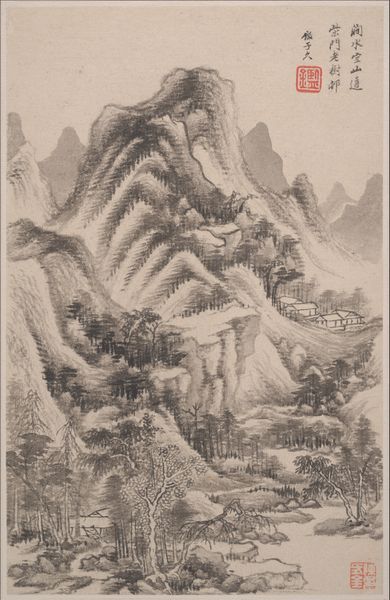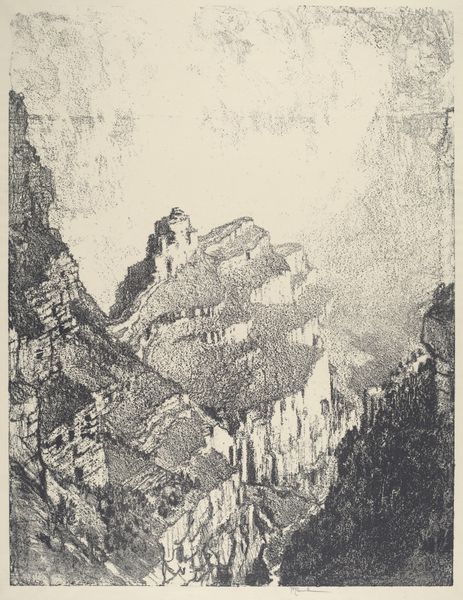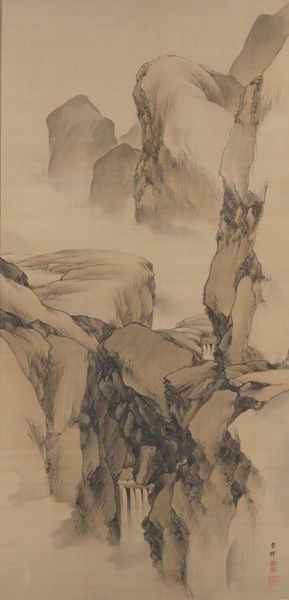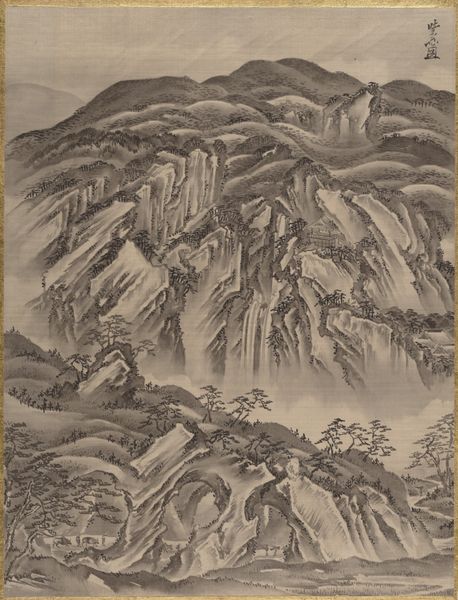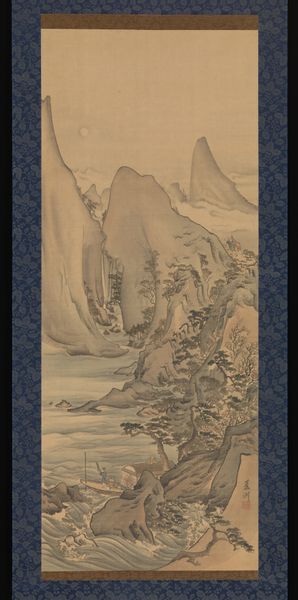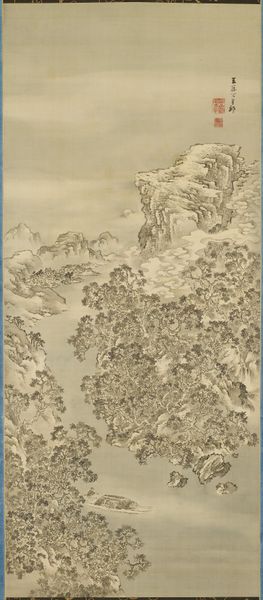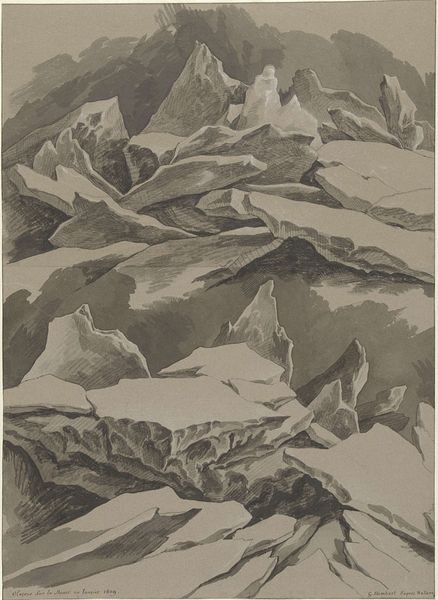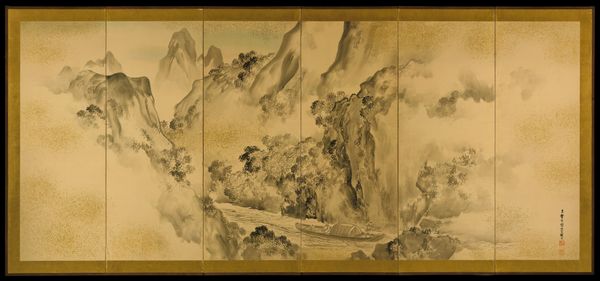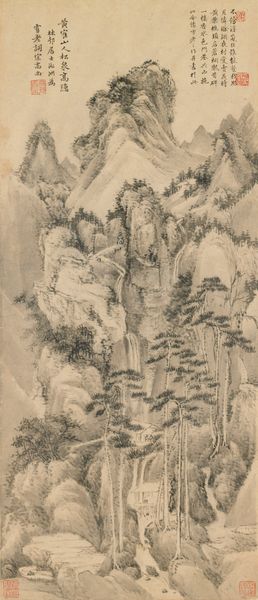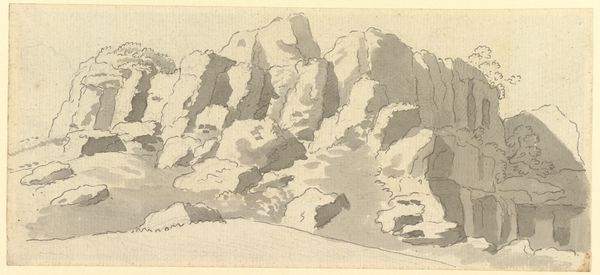
drawing, ink
#
drawing
#
ink drawing
#
ink painting
#
asian-art
#
landscape
#
ink
#
realism
Dimensions: 14 1/4 x 10 3/4 in. (36.2 x 27.3 cm)
Copyright: Public Domain
Curator: Kawanabe Kyōsai created this ink drawing, "Rocky Landscape," sometime between 1877 and 1897. It now resides here at the Metropolitan Museum of Art. What are your first impressions? Editor: Striking! The dramatic, almost theatrical, use of ink wash gives the mountains an imposing presence. There’s a stark beauty here, a sense of formidable, untouchable power conveyed simply through monochrome. Curator: Yes, and in exploring it further, consider the socio-political landscape of late 19th century Japan, a period of rapid modernization and Westernization. Kyōsai, known for his resistance to these trends, may be subtly commenting on the enduring power of the natural world versus transient human influence. Editor: I see that, particularly when considered through the lens of environmental philosophy. The composition almost asserts the supremacy of nature, especially in relation to human agency. Do you think that perhaps the limited tonal palette underscores this sense of permanence in contrast to the quickly changing world? Curator: Precisely! The limited color palette draws us to the forms, and the interplay between light and shadow accentuates the timeless qualities of the natural forms themselves. The artist presents nature not just as a pretty scene, but as a site of potential resistance to cultural erasure. Editor: Interesting point, it reminds me of certain arguments by cultural critics about preservation, connecting it to the need to maintain indigenous practices to defend identity against colonial impact. But considering the museum space, what statements could Kyōsai be trying to make about Japanese Art in these types of institutions? Curator: Thinking of institutional critique, consider the way Kyōsai might have been grappling with Japan's emerging national identity, both embracing and questioning it, in the face of Western fascination. To me, these types of spaces are opportunities for critical viewing that extend to a variety of groups represented by such objects. Editor: A truly multi-layered work, sparking critical discourse on environmentalism and colonial impact through form, tone, and subject matter. It also provokes questions about museums, the definition of national and cultural preservation. Curator: Exactly! It reminds us of the continuous dialogues happening throughout history, inviting continuous learning.
Comments
No comments
Be the first to comment and join the conversation on the ultimate creative platform.

